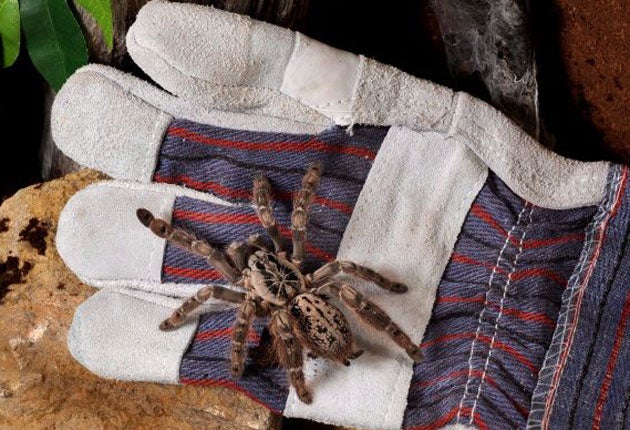Your support helps us to tell the story
From reproductive rights to climate change to Big Tech, The Independent is on the ground when the story is developing. Whether it's investigating the financials of Elon Musk's pro-Trump PAC or producing our latest documentary, 'The A Word', which shines a light on the American women fighting for reproductive rights, we know how important it is to parse out the facts from the messaging.
At such a critical moment in US history, we need reporters on the ground. Your donation allows us to keep sending journalists to speak to both sides of the story.
The Independent is trusted by Americans across the entire political spectrum. And unlike many other quality news outlets, we choose not to lock Americans out of our reporting and analysis with paywalls. We believe quality journalism should be available to everyone, paid for by those who can afford it.
Your support makes all the difference.Online shopping will never be entirely risk free, but even the most diligent of retailers is unlikely to warn against the possibility of your goods arriving in the company of a giant hairy tarantula.
Yet that was the tale told by a mystery middle-aged woman who arrived at Chessington Zoo, south-west London, holding a gift box with the terrifying arachnid angrily scurrying around in the bottom.
"She didn't want to leave any details," said Rob Ward, one of the zoo's spider experts, who met her when she arrived with the package. "She said she'd bought something online, and when it arrived she'd spotted something in the bottom of the box, and she didn't want to keep it. We don't know what the product was, or where she ordered it from."
Several months later, and after consulting a range of spider experts, Mr Ward and his colleagues still don't know exactly what type of spider it is. "It's very fast, it's very aggressive, and it's very big," he said.
"We think it we think it might be an African species, some kind of baboon spider. They're typically large and aggressive. At first we thought it might be a feather leg baboon, but we've ruled that out. It's not hairy enough."
There are at least 49 different species of baboon spiders, among around 900 different types of tarantula.
In the wild, baboon spiders will feed on crickets, as well as small mammals and lizards. This one is being fed on insects, and spends most of its time in its enclosure – a large sweet jar – though not always.
"We've had to chase it round the office a couple of times," said Mr Ward. "It is very fast." The spider hasn't been named as yet, though the range would be somewhat limited as they don't know if it is a boy or a girl. As they don't know how poisonous it is, they can only handle it using huge gloves, which prevent them from manipulating it in such a way as to find out its gender.
A number of tests can be performed on the spider to discover its exact type, and where it is likely to have spent its life, but these can only be performed after the spider dies. Baboon spiders can live anywhere from three to 10 years. Based on its size, this one is likely to be a couple of years old, so it may have some time to go.
In the meantime, it busily makes its web around some sticks that have been placed in with it, but spends most of the day hiding, and only comes out for food. It hasn't been put on display in the zoo yet, not least because zoo staff wouldn't know how to label it.
Nor, thankfully, will it form part of the spider phobia workshops that the zoo are beginning in November. "We find it is that creeping movement that most frightens people," said Mr Ward. "Then there's the fangs, the venom, that they can just drop down from anywhere, and movies like Arachnophobia don't help."
Rather less terrifying are the 200 tiny Fen Raft spiders staff at the zoo have also been rearing as part of a national conservation project to try and stem their decline. The tiny creatures are being kept in individual test tubes.

Join our commenting forum
Join thought-provoking conversations, follow other Independent readers and see their replies
Comments